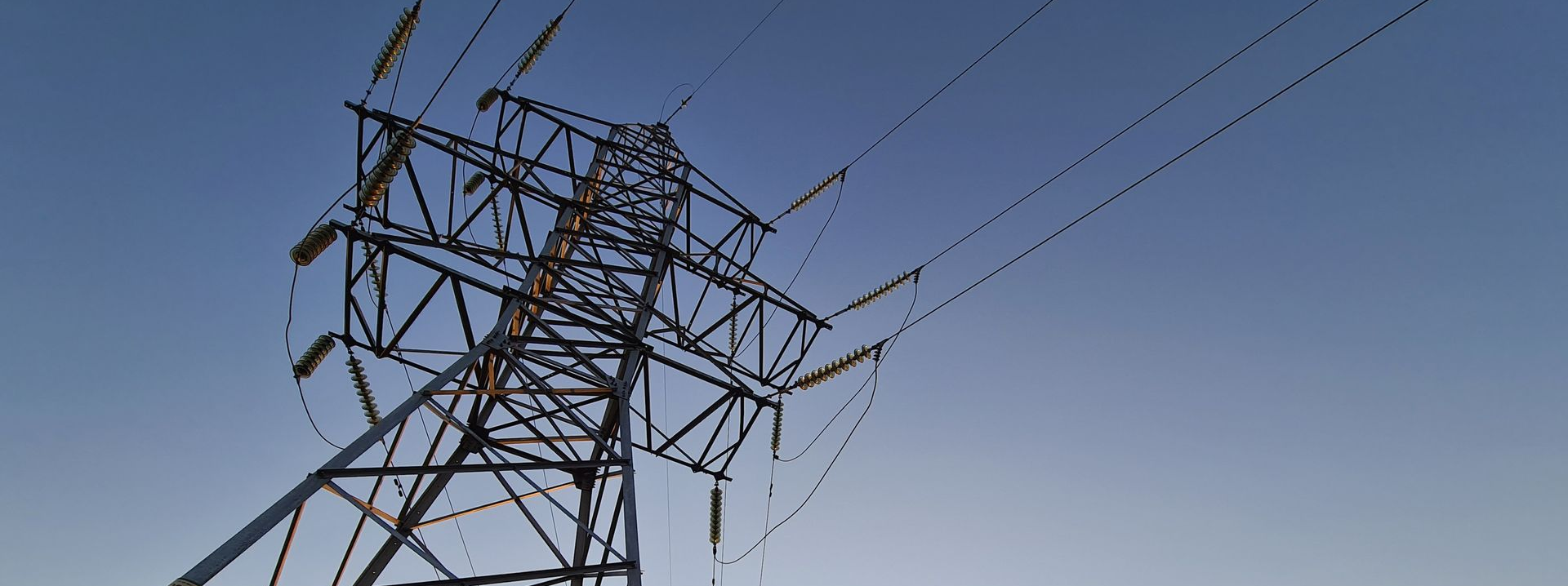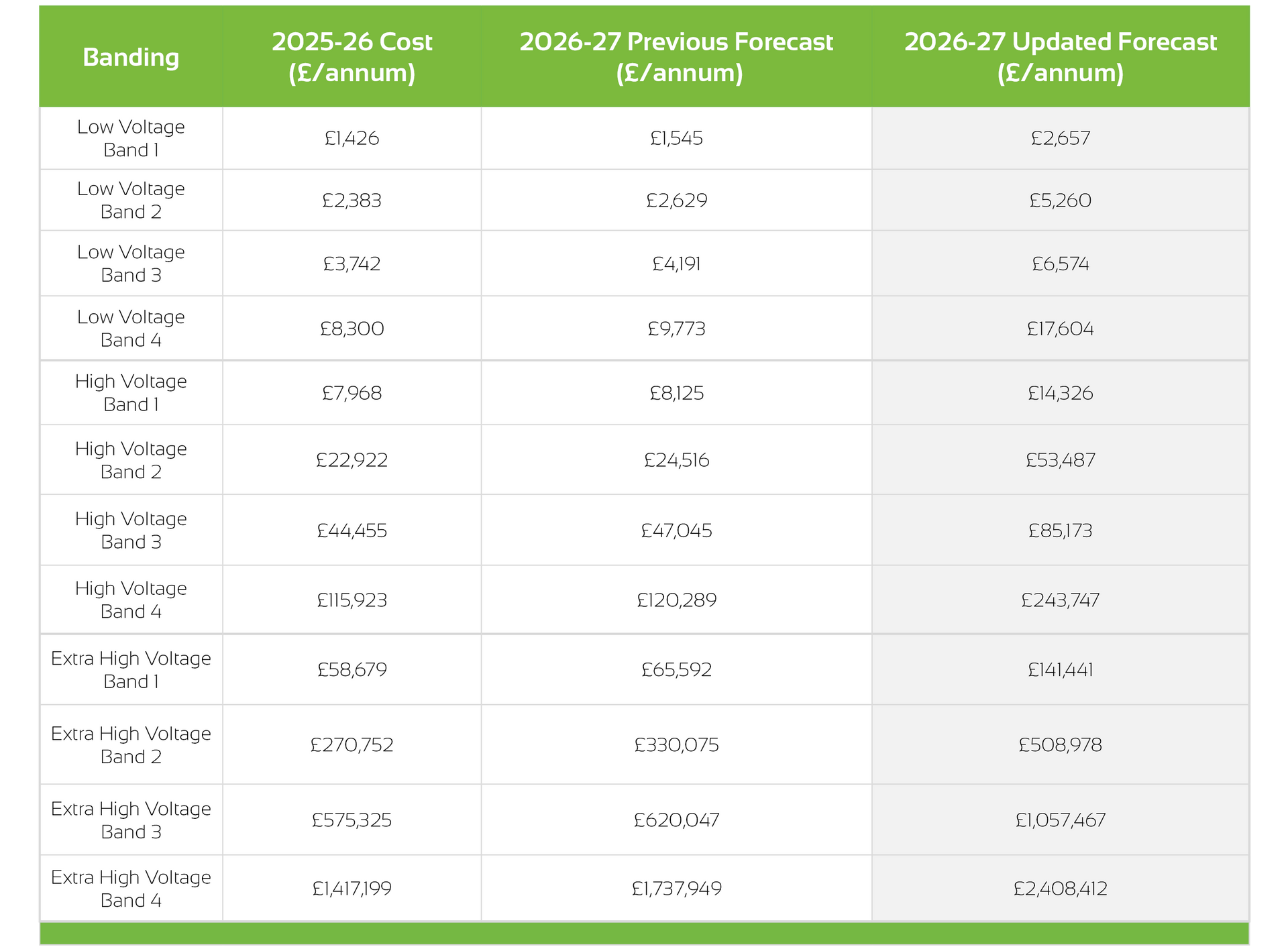TNUoS Charges to Soar: National Grid Forecasts Big Jump in Transmission Network Charges
National Grid ESO / NESO has published its updated Five-Year View of Transmission Network Use of System (TNUoS) tariffs, forecasting dramatic increases that will hit many large energy users hard.

Compared with existing rates and previous forecasts (notably from April 2025), TNUoS charges are set to double across many supply types, driven by higher Transmission Owner (TO) costs, rising demand residuals, and changes in banding thresholds under the upcoming price control period 2026/27 – 2030/31 (RIIO-3).
What’s changing and why it matters
It is important to note that these are still forecasts. Figures will be updated again in November, with final 2026 rates published in January. However, awareness of the latest projections is critical for business energy users.
- Stronger cost recovery needs:
The revenue the network needs to collect through TNUoS is rising. For example, for the period 2026/27, the forecasted TNUoS fixed (residual) standing charges are much higher than in prior years, nearly doubling in some cases.
- Demand residual charges increasing steeply:
The “demand residual” portion of TNUoS, which covers the fixed costs of maintaining the transmission network and is allocated via site banding, is forecast to increase sharply. The fixed £/site/day charges under the new residual banding rules will catch many sites in higher bands from April 2026.
- TCR / Residual banding thresholds confirmed:
The TCR (Targeted Charging Review) has updated how sites are allocated into residual (fixed £/site/day) charging bands. These band thresholds will apply over the next price control period (from April 2026 to March 2030/31). Some sites will move into higher bands, meaning substantial increases in their standing charges.
- Locational & demand-based components rising too:
Aside from residual charges, the locational demand tariffs (or ‘Triads’) also see increases. The combination of higher fixed standing charges and rising variable components will push up overall electricity bills for all electricity end users.
Key Numbers & Projections
The total TNUoS revenue to be collected for 2026/27 is forecast to be £8.9bn (an increase of £2.7bn from the 2026/27 Initial Forecast). This is set to increase to £13.6bn in 2030/31.
The New Rates:
Below is a summary of the updated charges by Banding according to the latest Five-Year View of TNUos Tariffs published by NESO, and compared with previous forecasting.

Implications for high energy consumption buyers
High energy needs businesses, industrial sites, manufacturing plants and high-voltage users are likely to see significant cost increases. The doubling of fixed residual standing charges for many, combined with other rising tariff components, could materially affect operating budgets. Sites currently on higher voltage supply or capacity agreements will especially feel the pain.
What to do next
The charges apply to all electricity users and are not dictated by contract type, supplier or procurement decisions. Unfortunately, they are unavoidable. Readiness for the implications is critical.
If you are a large energy buyer, now is the time to:
- Review your current site banding under residual and demand residual rules, and check whether you’ll be re-banded into a higher cost threshold.
- Model the impact of both fixed (£/site/day) and variable (locational, demand) tariff increases on your energy spend for 2026-2030.
- Consider whether there are operational or contractual changes (e.g. reducing agreed capacity, altering usage patterns) that could mitigate cost increases.
- Keep a close eye on future NESO forecasts, Ofgem pricing determinations for RIIO-ET3 / RIIO-3 TOs, and any modifications under the Targeted Charging Review.
At Optimised, our experts are already combing through our client portfolio to identify those sites significantly affected. We will also keep our customers informed of any material changes to these rates up to final publication in January 2026. If you believe your site may be impacted, incorrectly banded or you simply need help to understand what this means for your energy strategy, please
get in touch.
BOOK YOUR 30-MINUTE ENERGY MANAGEMENT CONSULTATION
Fill in your details below to arrange a complimentary consultation with one of our experts. They will give you bespoke advice to help your business achieve all its energy needs, reducing cost, consumption and carbon.









